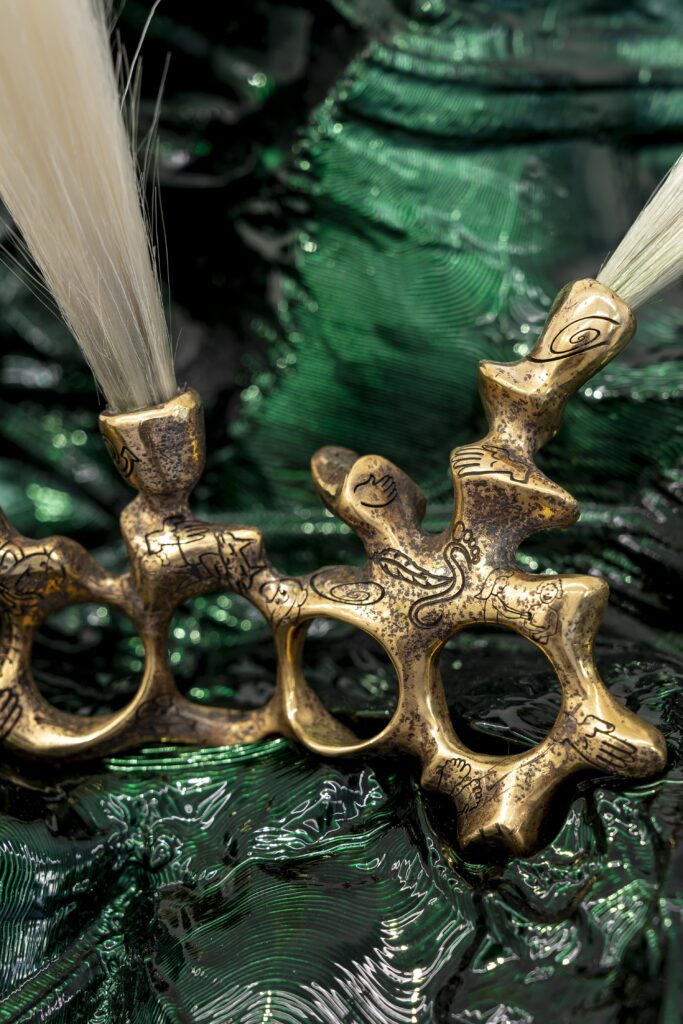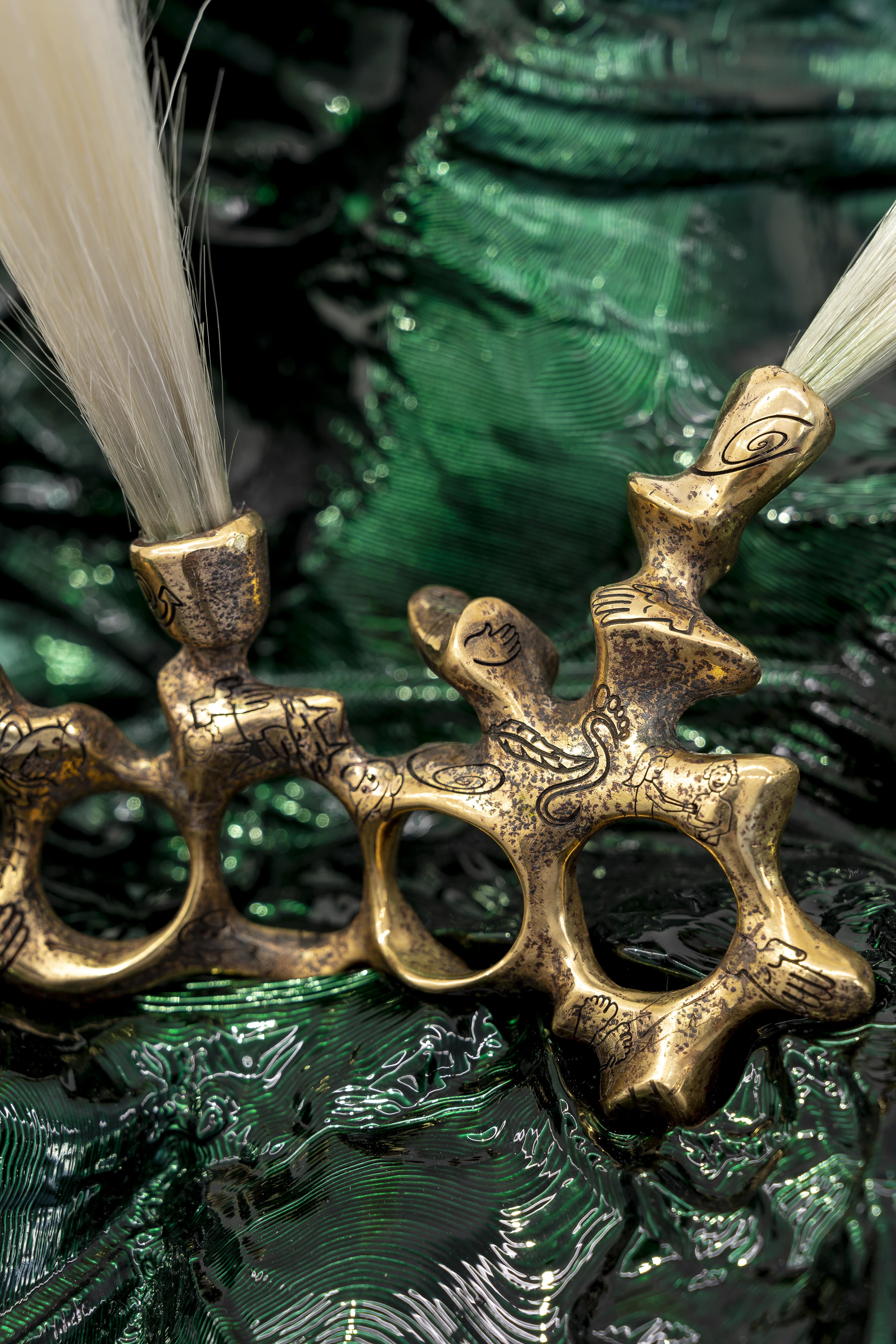Artists: Darja Popolitova, Sabīne Vernere, Elīna Vītola
Curator: Šelda Puķīte
Title: Triquetra
Venue: Kogo Gallery, Tartu
Photos: Roman-Sten Tõnissoo

Humans often have a tendency to view the world as a binary entity where all things and actions can be categorised into simple oppositions. This creates an illusion of control and a promise of harmony. At the same time, imagining a world consisting of a broad spectrum of options and truths with no clear identities or meanings can feel confusing and threatening. Curiously enough, there is a symbol used throughout different historical periods and cultures that tries to present a third dimension of our perception – the triangle. It has been used to represent wholesomeness in which the never-ending flow of life circulates in all imaginable spectra. In contemporary culture, these ideas continue to sprout through movements like ecofeminism, hydrofeminism, modern witchcraft and queer studies, all of which search for connections in an array of diversity. To exercise our thoughts on wholesomeness through art, curator Šelda Puķīte has summoned three artists – Darja Popolitova, Sabīne Vernere and Elīna Vītola – to create a magical triune knot of their own.








The title of the exhibition, Triquetra, is borrowed from the name of an ancient Celtic symbol that has been used through different periods and cultures to indicate the power of three. It is often depicted as three arches that flow through each other without a start or end point, creating a knot. In early pagan traditions, this symbol is believed to have stood for the Triple Moon Goddess, referring to the spiritual power of the Matriarchy, which was later replaced by Christianity’s holy trinity of Father, Son and Holy Spirit. Now, in contemporary cultural contexts, it serves as a playful ground for artists to explore their identities and to create visions about the spiritual and political unity of three elements – magic, nature and art.
Throughout history, magic, nature and art have been seen as part of the dangerous chaos that exists outside the normative. They are entities on broad spectra that make them seem abstract, out of control and, therefore, suspicious. What is forgotten amidst such prejudice is that each of them provides spiritual connectivity, imagination, an openness to experimentation and play, as well as healing. The spectrum encoded in each can be viewed as a playful trickster expanding meanings, blurring lines and territories, and growing all the connecting networks.
The invited artists all have their own unique creative spectra that define their techniques and interests. For Darja Popolitova, it is magic and witchcraft that she uses as a speculative tool to address certain complexities in linguistic expressions as well as mundane behaviour and habits in modern society. In the exhibition, she manifests this through an altarpiece and engraved knuckle rings that serve as ticklers. Through the means of touch, she explores unconventional ways to awaken stagnant minds, in this case tucking into the problematic feelings of revenge and justice.
In Sabīne Vernere’s works, nature as a spectrum reveals itself through processes of metamorphosis. Her painted anthropomorphic, gender-fluid beings are in constant flux, floating on the surface of the paper. There is a strong presence of beauty, sensuality and emotion in her works, but also disturbance and violence, which correlates with the complexities of the dynamics between humans and nature. In the exhibition, this is revealed in the cold, sharp forms of discarded leftovers of marble and the painted limbs that resemble folded stems with blossoms ready to unfold and open.
Elīna Vītola’s interest has always been the art world itself. Her artistic practice can be described as relational, incorporating the space, other participants and the situation itself in dialogue. Art as her spectrum has become an important communicator to investigate values, crafts, identities and histories. In her often site-specific and actively engaging works, she exercises the idea that art mirrors life, mimicking movements, images and even smells. Her installation for this exhibition reflects on craftsmanship, gestures and rituals as maintenance and hygiene that is common in art making; it also captures and remasters the scents used by creative individuals whose actions have not just left special marks in the art world but also affected people’s lives in general.
